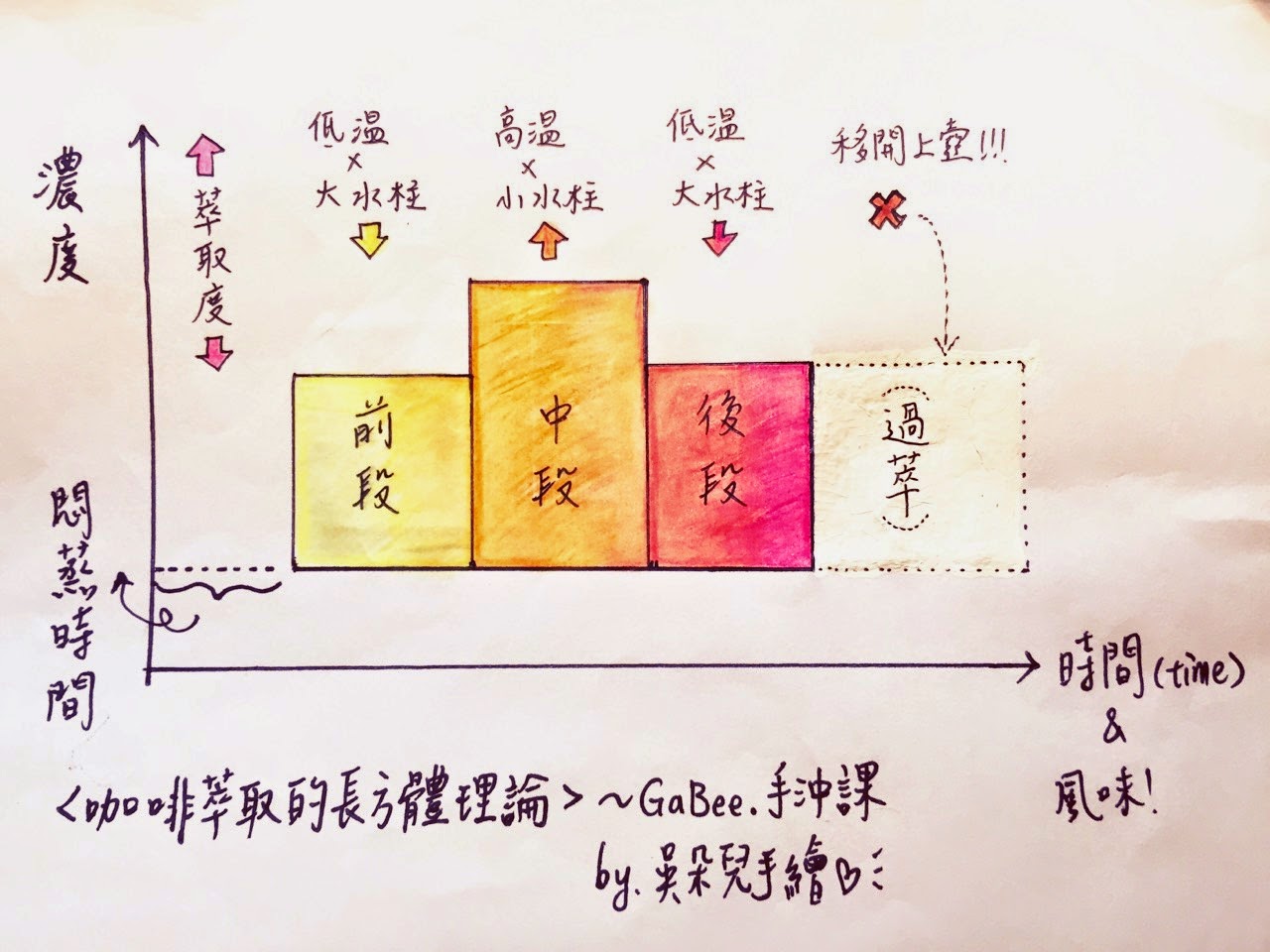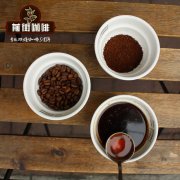Introduction to hand-brewing Coffee: cuboid Theory of Coffee extraction

Professional coffee knowledge exchange more coffee bean information please follow the coffee workshop (Wechat official account cafe_style)
Cuboid Theory of Coffee extraction
Teach you to systematically "stack" out
The flavor of the coffee you want to present.
In the process of coffee extraction
Except that "coffee extraction quantity (concentration)" is one of the factors of manipulation.
The "flavor" of the extraction will also change with the extraction time.
(at different stages, coffee powder comes into contact with water and releases different substances
As a result, the combination of flavor is changed. )
Teacher Dongyuan put these two factors here.
It is systematically organized as "the cuboid theory of coffee extraction".
Concentration X time (extraction flavor)
Concentration (X axis)
-can pass through the temperature, water column size, water injection mode …... And other ways to change the extraction concentration.
Time (extraction flavor) (Y axis)
Teacher Dongyuan divides the extraction time into five stages
1. Steaming time (at this stage, coffee powder has just come into contact with hot water and is just beginning to change and develop)
two。 Front stage extraction (mainly sour coffee flavor)
3. Mid-stage extraction (from sour to sweet)
4. After-stage extraction (sweet and bitter flavor)
5. Excessive extraction (miscellaneous smell, bad taste after extraction)

Therefore, we have been taught through teachers.
How to change the extraction degree through several variables
We can give different degrees of extraction at different stages of hand punching.
And then pile up different flavor combinations of the same coffee.
Dongyuan teacher, for example, if you want a coffee with high sweetness but low acidity and low bitterness:
Then the hand-runner needs to think:
Low acidity > > less front extraction > > low temperature water and large water column can be used.
High sweetness > > Middle extraction > > High temperature water and small water column can be used.
Low bitterness > low later stage extraction > > low temperature water and large water column can be used.
Avoid any over-extracted flavor > > remove the pot as soon as possible after the extraction
The corresponding coffee extraction box, as shown in the following figure:

Important Notice :
前街咖啡 FrontStreet Coffee has moved to new addredd:
FrontStreet Coffee Address: 315,Donghua East Road,GuangZhou
Tel:020 38364473
- Prev

Does hand coffee produce grease? The role of hand-brewed coffee oil why hand-brewed coffee is astringent
Professional coffee knowledge exchange more information about coffee beans Please follow the coffee workshop (official Wechat account cafe_style) when it comes to the foam in coffee, what will come to mind? Generally speaking, the first impression should be the large layer of "Crema" floating above the semantic concentrate, and it is often said that that layer of Crema is a very important source of aroma and taste, but in fact, this
- Next

Why is the coffee sour? Is the coffee sour or bitter? Is the coffee a little sour?
Professional coffee knowledge exchange more coffee bean information Please follow the coffee workshop (Wechat official account cafe_style) Coffee with a little sour, it will make this cup of coffee feel sweeter and more layered! And the higher the altitude, the sour taste of coffee beans will be more obvious, although it can be modified by baking to modify the sour taste, but it is a pity. Very
Related
- Beginners will see the "Coffee pull flower" guide!
- What is the difference between ice blog purified milk and ordinary milk coffee?
- Why is the Philippines the largest producer of crops in Liberia?
- For coffee extraction, should the fine powder be retained?
- How does extracted espresso fill pressed powder? How much strength does it take to press the powder?
- How to make jasmine cold extract coffee? Is the jasmine + latte good?
- Will this little toy really make the coffee taste better? How does Lily Drip affect coffee extraction?
- Will the action of slapping the filter cup also affect coffee extraction?
- What's the difference between powder-to-water ratio and powder-to-liquid ratio?
- What is the Ethiopian local species? What does it have to do with Heirloom native species?

